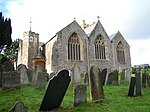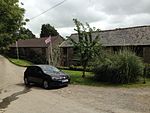Slade Reservoir

The Slade Reservoirs are twin reservoirs in the North Devon town of Ilfracombe, England. They are owned by South West Water, and leased to South West Lakes Trust. While no longer used for water supply, they are used as fisheries (mainly the lower reservoir). The waterworks has since been demolished, Ilfracombe's main waterworks is now Hore Down Works on the outskirts of the town. Higher and Lower Slade Reservoirs were originally impounded for potable water supply but local knowledge suggests this reservoir is no longer used (and is considered natural by the enrvioment agency). The reservoir has a 6 acre mixed fishery (carp, bream, tench, perch, roach & pike) managed by SW Lakes Trust. The reservoirs were built to supply water to the urban district of Ilfracombe. The reservoirs were insufficient so that Wistlandpound Reservoir was constructed. It was completed in 1956) and is now used as a fishery. Fishing here is restricted as a permit is required. Upper Slade Reservoir is a twin reservoir of Lower Slade Reservoir and served the same purpose. While it may seem that the river wilder is the primary inflow, it is not the wilder intercepts the spillway between the two reservoirs A staircase has been constructed between the dam and the former railway line between Barnstaple and Ilfracombe. Fishing is allowed in this reservoir, but is strictly limited and requires a special permit.
Excerpt from the Wikipedia article Slade Reservoir (License: CC BY-SA 3.0, Authors, Images).Slade Reservoir
Doggie Lane, North Devon Slade
Geographical coordinates (GPS) Address Nearby Places Show on map
Geographical coordinates (GPS)
| Latitude | Longitude |
|---|---|
| N 51.190277777778 ° | E -4.1394444444444 ° |
Address
Doggie Lane
Doggie Lane
EX34 8LJ North Devon, Slade
England, United Kingdom
Open on Google Maps










